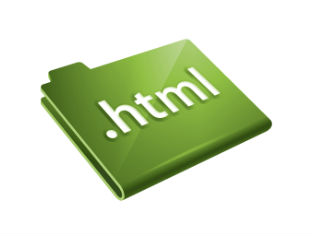Cascading Style Sheets
 Cascading Style Sheets, or CSS, allow you to specify things like the font you want on your page, the size of your text, whether the page is to have 2 columns, whether your text is to be in bold or italics, and so on. In other words, it is the part that lets you control the appearance of your web page.
Cascading Style Sheets, or CSS, allow you to specify things like the font you want on your page, the size of your text, whether the page is to have 2 columns, whether your text is to be in bold or italics, and so on. In other words, it is the part that lets you control the appearance of your web page.
You may be used to the Microsoft Word "doc" format, where everything from the text you type to the appearance of the document is specified in a single file, transparent to you. On the web, the raw information is specified in HTML and most of the appearance is determined by the CSS.
If you use a web editor like those I mentioned above, you won't have to bother with which parts goes into the HTML portion and which parts goes into the CSS portion. Everything will be taken care of by the editor.
For those who like to know the gory details, you can read my Introduction To Cascading Style Sheets (CSS). However, if you are using a web editor, you don't need that information since the editor does everything for you, so don't worry if that article is too technical.
HTML
 When you write a normal document using a word processor like Microsoft Word/Office, your text is saved in a file with a special format. It is not simply saved as the string of words you typed since the document needs to preserve things like the font you chose, the size of the text, which words are in bold, which italics, and so on. The special format includes not only your words, but all these extra information so that the next time Word opens your document, it can display the document with the exact appearance you created earlier.
When you write a normal document using a word processor like Microsoft Word/Office, your text is saved in a file with a special format. It is not simply saved as the string of words you typed since the document needs to preserve things like the font you chose, the size of the text, which words are in bold, which italics, and so on. The special format includes not only your words, but all these extra information so that the next time Word opens your document, it can display the document with the exact appearance you created earlier.
In the same way, web pages are simply strings of words put in a special format that web browsers are able to display. While the format of Word documents is simply called "Word format" (or "doc format"), loosely speaking, one might say that web pages are formatted using "HTML".
 We listen to our clients to the rest of our team-in order to get a better understanding of the situation. We feel that the best work can only be achieved through proper and consistent communication, both internally and externally.
We listen to our clients to the rest of our team-in order to get a better understanding of the situation. We feel that the best work can only be achieved through proper and consistent communication, both internally and externally.




